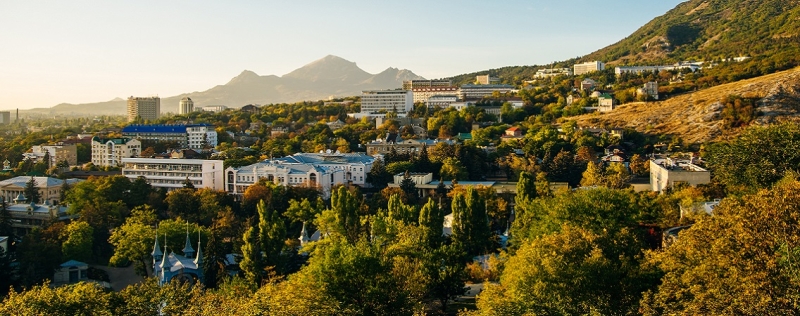
One of the most popular resorts of the Caucasian Mineral Waters, Pyatigorsk, has been attracting thousands of tourists since the century before last. There is stunning nature, delicious cuisine and interesting sights. The city is suitable for both those who want to relax on the waters and those who are more attracted to active tourism. We tell you about the main attractions of Pyatigorsk and give useful tips and life hacks.
How to get there
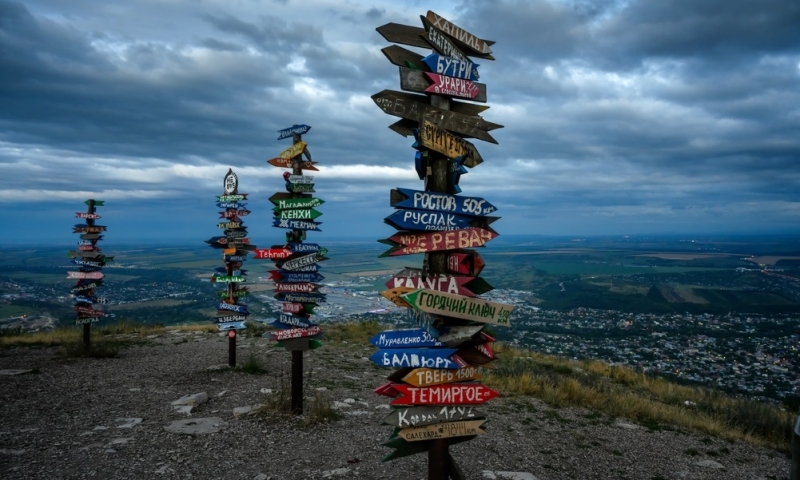
You can get to one of the most beautiful and atmospheric cities of the North Caucasus in a way convenient for you: planes fly there, trains and regular buses go there, and you can also take a real road trip and get there by car.
There is no airport in Pyatigorsk itself; it is located in neighboring Mineralnye Vody, from where you can easily reach your destination by taxi in half an hour or by public transport (minibus + train) in 40 minutes. Flight from Moscow to Mineralnye Vody and back costs from 8,000 rubles, flights are direct, you will spend 3 hours 30 minutes on the way.
Search for flights
Trains to Pyatigorsk depart daily from Moscow from Kazansky and Kursky stations. The minimum travel time is 23 hours, one-way ticket prices start from 3,800 rubles. The fastest and most comfortable train is called “Caucasus”, it is two-story, tickets cost from 5,100 rubles.
Search train tickets
You can also get from Moscow to Pyatigorsk by regular bus. They depart daily from the Kotelniki or Salaryevo bus stations or from the Strogino metro station. Prices for one-way tickets start from 3,600 rubles, the journey will take you about 20 hours.
View bus tickets
And, of course, you can get to Pyatigorsk by personal or rented car. From Moscow to the city it is about 1,600 km; along the way, see Voronezh, Rostov-on-Don and Stavropol, or you can drive through Volgograd (the journey will become longer by a couple of hours). From the capital, take the M4 Don highway, then follow the signs. There will be several sections of toll roads along the way. If you drive without stops, you will get there in about 18 hours through Voronezh and in 21 hours through Volgograd.
Rent a car
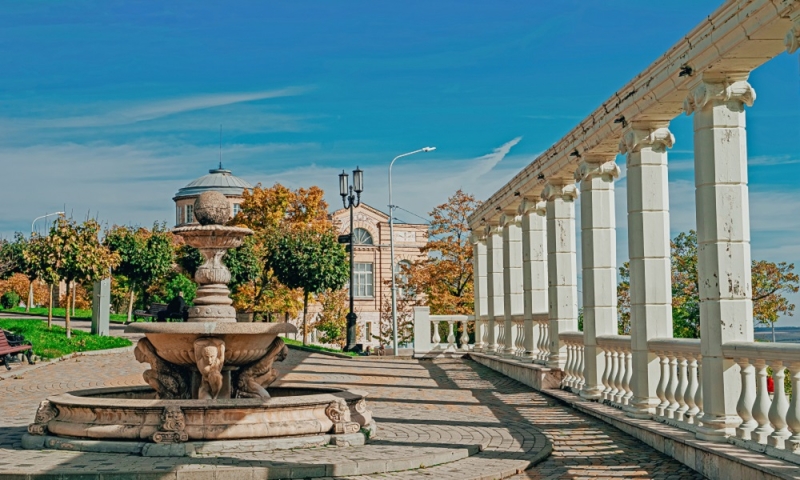
Where to stay
Pyatigorsk is a resort city, so there are many hotels with spa centers and their own thermal springs. In addition, you can rent apartments and stay in an inexpensive hotel in the very center of the city. It all depends on your goal: would you like to spend time on the waters and improve your health, or see the sights of Pyatigorsk and its surroundings.
We have selected for you several good options that OneTwoTrip customers like
Spa Hotel “Bristol”, 4 stars, from 8,700 rubles per night for a double room. Rating 9.4 out of 10. An excellent hotel in the resort area of Pyatigorsk at the foot of Mount Mashuk, next to the Tsvetnik park. The hotel has a good spa center.
Book a room
Park Hotel “Rodnik”, 4 stars, from 6,100 rubles per night for a double room. Rating 9.4 out of 10. Stylish hotel with spacious standard rooms and huge suites. Guests praise the coziness and nice territory. The city center is about twenty minutes on foot.
Book a room
Hotel “Mashuk”, 2 stars, from 3,000 rubles per night for a double room. Rating 8.7 out of 10. The hotel is located in the very center, the main attractions and attractions can be reached on foot. Family rooms available.
Book a room
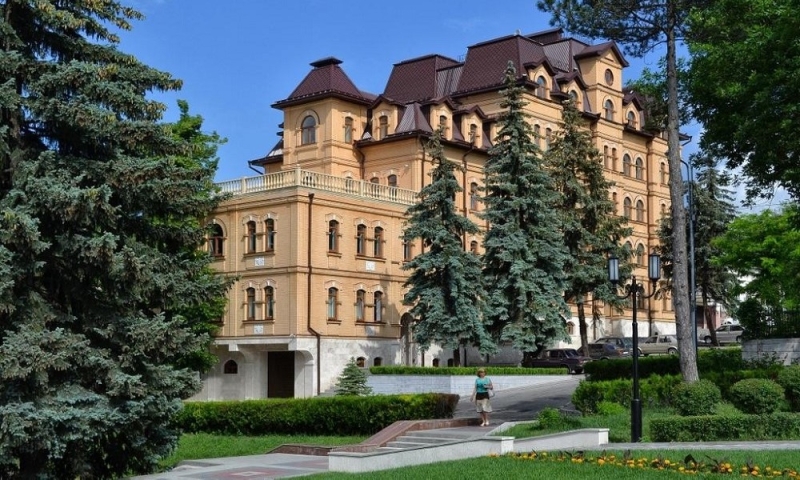
When to go
Pyatigorsk is located in the southern part of Russia, between the Black and Caspian seas, in the foothills of the Caucasus. High mountains do not allow warm air from Transcaucasia to pass here, but at the same time they do not retain cold air from the Arctic in winter. Therefore, the climate in Pyatigorsk is more severe than in neighboring regions. There is a clear transition between the seasons; in winter the temperature stays below zero, and in summer it is rarely very hot. In addition, due to the fact that the city is located at an altitude of 500 meters, there are often winds and the weather often changes even during the day.
The best period for sightseeing and walking is considered to be from May to October. In May, full-fledged summer already begins, everything turns green and blooms. In summer and early autumn it is very comfortable to walk around the city and its surroundings, it is pleasant to go hiking and explore health paths. Most rain falls in June. Temperatures in summer can rise to +25 °C, and sometimes higher, but even the heat is easily tolerated thanks to the winds. The swimming season at the resort lasts from June to August.
Autumn in Pyatigorsk is very beautiful: the surrounding mountains are painted in golden and red tones, the air is clean and transparent. The warmth lasts until October, with November comes light frosts.
Winter finally sets in at the end of November, and it is coldest in January and February. Usually the temperature at this time of year is about -5 °C, but sometimes it can be -20 °C, in addition, at this time of year it is quite windy and the sun rarely shines through. Sometimes snow falls, but it melts quickly. If you plan to visit Pyatigorsk in winter, be sure to check the weather forecast.
Spring comes to the city in the first half of February, but until mid-May the weather is changeable, it can be damp and rainy.
What to see in the city
Pyatigorsk is a balneological resort, where people have been coming for treatment and recovery since the 19th century. At the same time, there are enough interesting places and unusual attractions, so you will have something to do both in the city itself and in its surroundings.
Park “Flower Garden”
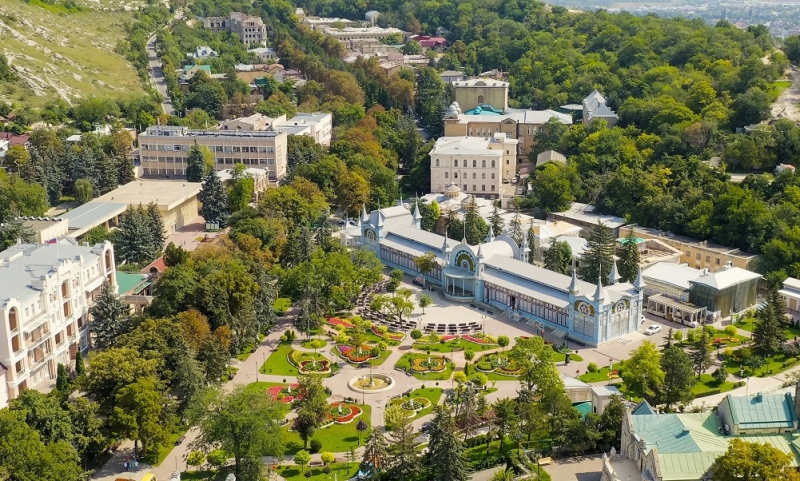
Perhaps the most famous place in Pyatigorsk. The park is the same age as the city – the park was founded in the summer of 1828. Then there were flower beds, benches and a swimming pool with mineral water. The gates opened for the first guests in 1829.
Since then the park has grown greatly. Today, at the entrance, visitors are greeted by a sculpture of Kisa Vorobyaninov, the hero of the work by Ilf and Petrov. You can leave a coin in his hat, which lies nearby, for good luck, and go explore the luxurious flower garden and numerous attractions.
Not far from the entrance is the Lermontov Gallery – you definitely won’t pass by this original building with pointed turrets and spiers. It was built at the beginning of the 20th century and was initially presented at an art and industrial exhibition in Nizhny Novgorod, and only then brought disassembled to Pyatigorsk and reassembled at this place. The opening coincided with the anniversary of Lermontov’s death, hence the name – the poet himself, of course, had never been here. Today the building belongs to the State Philharmonic, so concerts and exhibitions are periodically held in the auditoriums and on the summer stage.
Not far from the gallery is another local tourist attraction, Diana’s Grotto. This place has an interesting history. In 1829, the first ever conquest of Russia’s highest mountain, Elbrus, took place as part of the military expedition of General Emmanuel. They decided to mark the event by installing two cast-iron memorial slabs, but delivering them to the Elbrus camp turned out to be difficult, and the slabs were installed in Pyatigorsk, in an artificial grotto built in the shape of a mountain. It was planned that a double-headed “snowy” peak would be laid out of white stone above the grotto, but soon the general himself ordered that the structure be called Diana’s Grotto. According to myths, the ancient Roman goddess of the hunt rested in similar shady grottoes on hot days. Nevertheless, cast iron plates about the conquest of Elbrus remained in the grotto, and they can still be seen today. They also say that Lermontov loved to spend time in this place.
And another famous location of the park is a beautiful rotunda gazebo with snow-white columns, installed on the site, which offers a stunning panorama of the surrounding area. Its prototype was the Temple of Aeolus pavilion, located in a park near London. According to the original plan, in the center of the gazebo there was supposed to be a statue of Aeolus, the ancient Greek lord of the winds. However, the chief physician of the Caucasian Mineral Waters, Fyodor Petrovich Conradi, proposed installing an Aeolian harp on the roof – a musical instrument driven by the wind. The doctor decided that music would have a good effect on vacationers. Conradi’s idea was supported, and the harp still fills the entire area with melodic sounds at the slightest breeze. True, the modern harp is electronic, but the melody is almost no different from what Lermontov and his contemporaries heard.
Lermontov places
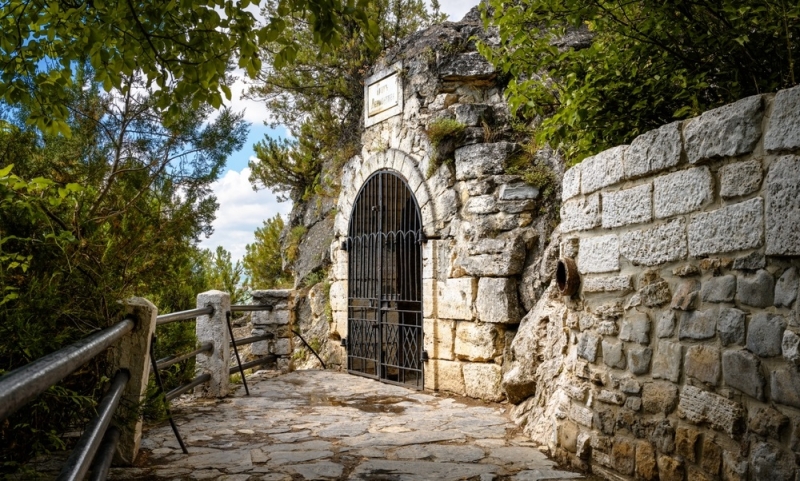
Pyatigorsk is inextricably linked with the name of the great Russian poet: Mikhail Yuryevich spent a lot of time in the city throughout his life, his famous novel “A Hero of Our Time” was conceived here – and here his life tragically ended. & ;nbsp;
You can take a tour of the places where the poet most often visited – this way you will learn more about his life and not miss interesting details and facts. But you can bypass iconic locations on your own. Start with the house where Lermontov spent the last days of his life – original furniture and interior items have been preserved here. It is located at st. Lermontova, 4. Next on the list will be the Tsvetnik park, which we already talked about above. And then you can look at the site of the famous duel – it is believed that it took place on Mount Mashuk, and today there is an obelisk with stone vultures installed there. By the way, local residents believe that in fact the poet fought with Martynov in the Perkal rocks, which is 400 meters from the point marked by the obelisk.
Fountain “Fairy Tale”
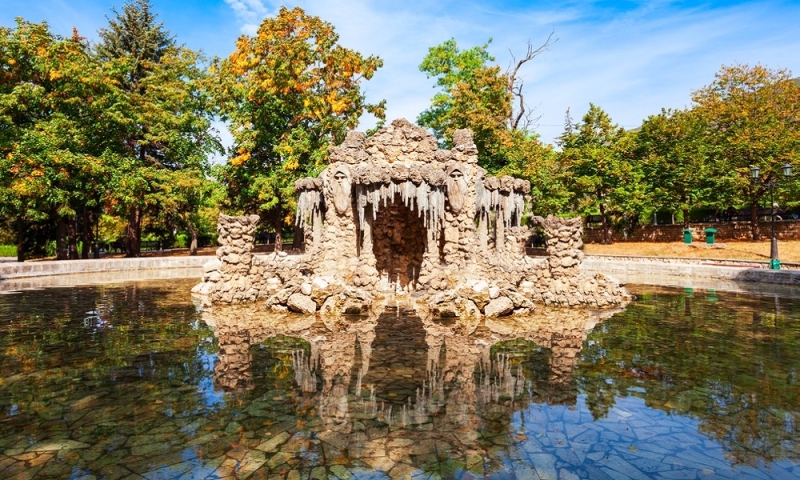
The beautiful building is located on one of the central streets of Pyatigorsk, Kirov Avenue. The fountain is also known as “Grandfathers” or “Gnomes”. The fountain was built on this site in 1902 – then it was called the “Giant”, and a powerful stream of water shot vertically upward. At the same time, the structure could hardly be called beautiful, and it was soon replaced by a more elegant composition. This is exactly what has survived to this day: several nice stone grottoes with relief images of bearded fairy-tale men, either gnomes or grandfathers, as you prefer. Today the fountain is effectively illuminated at night, so we recommend coming here in the evening when it looks truly fabulous.
Gagarin Boulevard
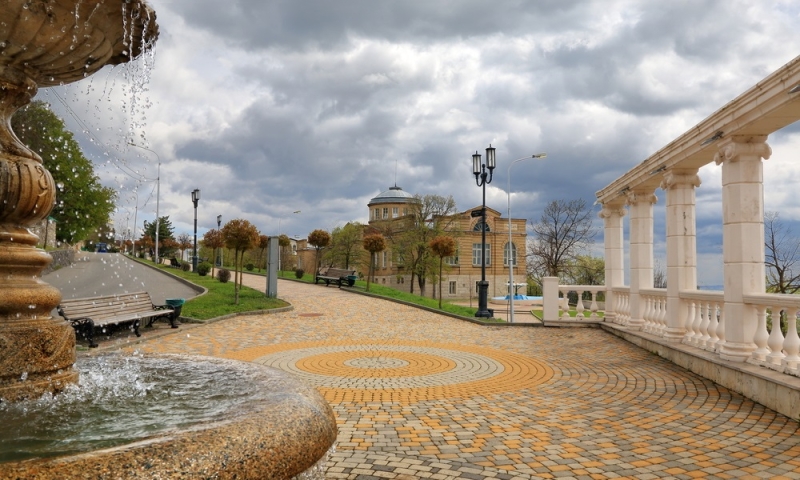
Every city has an iconic street, and in Pyatigorsk Gagarin Boulevard plays this role. Despite the fact that the street is not pedestrian, it is popular among tourists. Many come here not just to take a walk, but to get to the famous Lake Proval – the only way there is through the boulevard.
The boulevard itself was landscaped several years ago, and now there are nice tiled paths, there are benches for rest, and a fountain. Along the boulevard there are rest houses and sanatoriums – many are located in ancient buildings, the architecture of which is pleasant to admire along the way.
Lake Proval
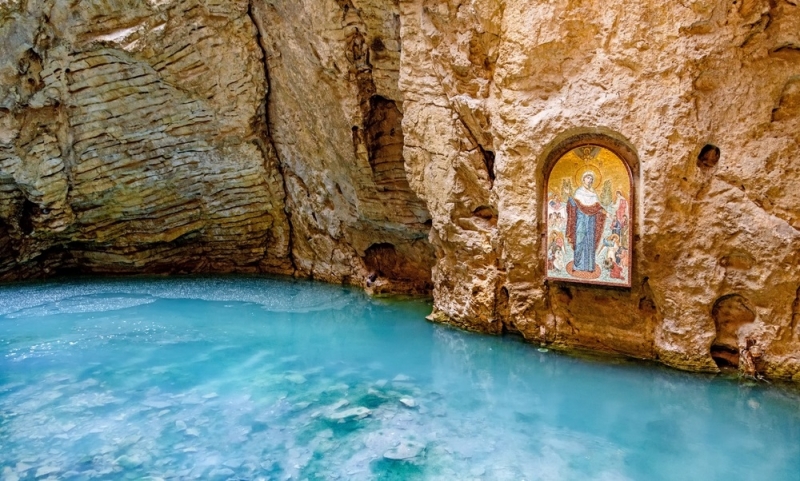
In the cave in Mount Mashuk – we’ll talk about it a little further – there is a beautiful lake with bright turquoise water and a specific smell. The name “Proval” was not chosen by chance: hydrogen sulfide fumes many years ago destroyed the vaults of the cave, and they collapsed. The lake was discovered at the end of the 18th century, and for some time they even swam here: you could go down to the water in a wooden basket. And later a grotto was cut into the rock, along which today you can walk to the very shore of the lake. Swimming in it is now prohibited, you can only admire it.
The bronze Ostap Bender is on duty at the entrance to the cave – these places are connected with the action of the book “The Twelve Chairs”. As stated in the text, the great combinator “sells” tickets to the lake (entrance there, of course, is free).
Mount Mashuk
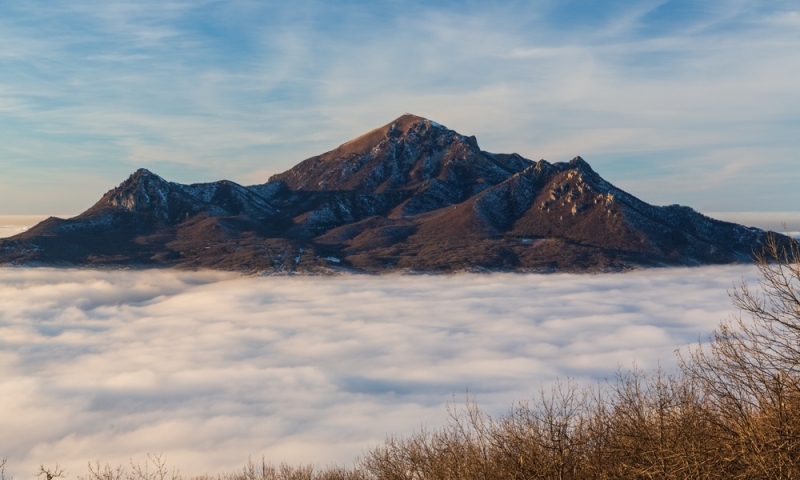
This mountain rises directly above the city, and everyone who comes here definitely wants to explore the surrounding area from the top. Getting there is not difficult: the cable car will smoothly lift everyone up in just a couple of minutes. And what views open from the trailers! Be sure to take a couple of photos. Along the way, by the way, you can see the only rock portrait of Lenin in the world, painted in 1925 on the eve of the congress of mountain women and Cossack women of the North Caucasus (which, by the way, was attended by Clara Zetkin herself).
At the top you will find pillars indicating the direction and distance to various Russian and foreign cities and a beautiful cascading fountain. Here you can have lunch in a restaurant serving Caucasian cuisine. We recommend going down on foot along the serpentine road, the walk will be easy, and along the way you will see several nice places.
Gate of Love
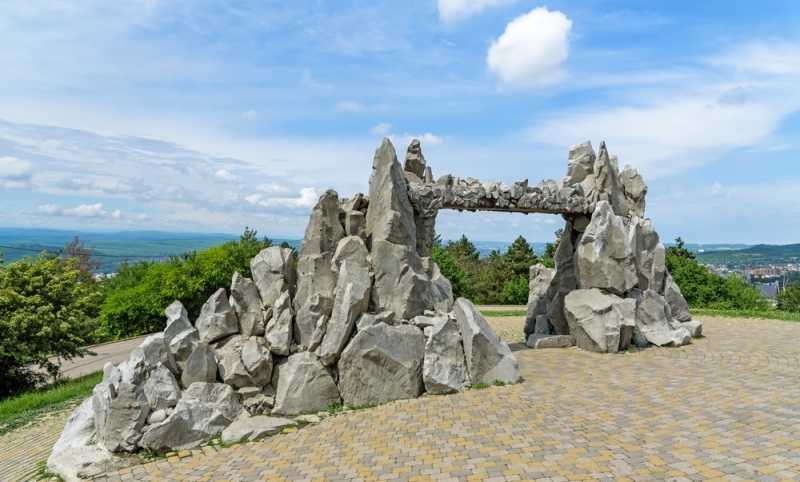
Descending from Mount Mashuk (or, conversely, going up) from the Lermontovsky crossing, you will not miss the observation deck on which a giant gate is made of stones – they are called the Gates of Love or the Sun. It is believed that lovers who walk through them three times holding hands will be inseparable for the rest of their lives. It also offers a wonderful view, so the site is a favorite place for romantic photo sessions.
“Shameless Baths”
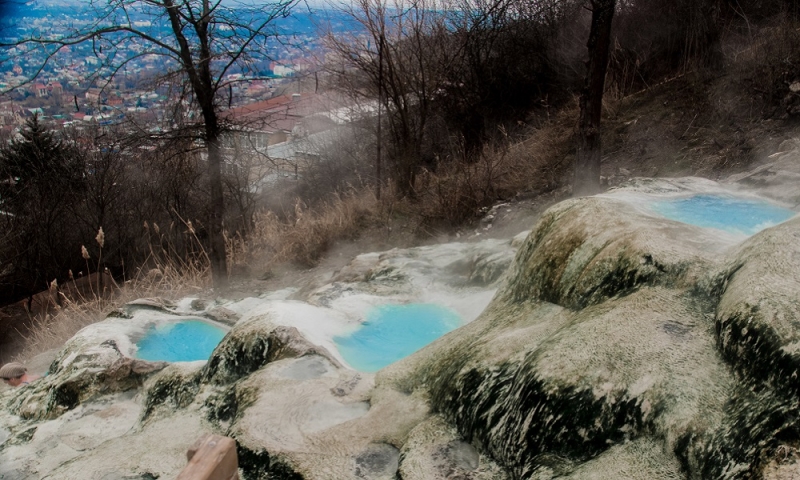
On the slope of Mount Mashuk you can also find unusual baths in which warm mineral water is collected. Previously, public bathing was considered indecent, which is why these tanks were called shameless baths. You can stay in highly mineralized water for about 10 minutes and lie quite comfortably. There are a lot of people here during the day, but if you come early in the morning, you may find yourself alone. It’s also very beautiful here at sunset.
Important: baths should not be taken by pregnant women and people with heart disease or high blood pressure.
What to see outside the city
Most often people travel from Pyatigorsk to neighboring resort cities – Essentuki, Kislovodsk and Zheleznovodsk. These are very popular locations, and you can spend a whole day visiting each one – walking the streets and parks and tasting mineral water. But there are several more leisure options.
Lake Tambukan
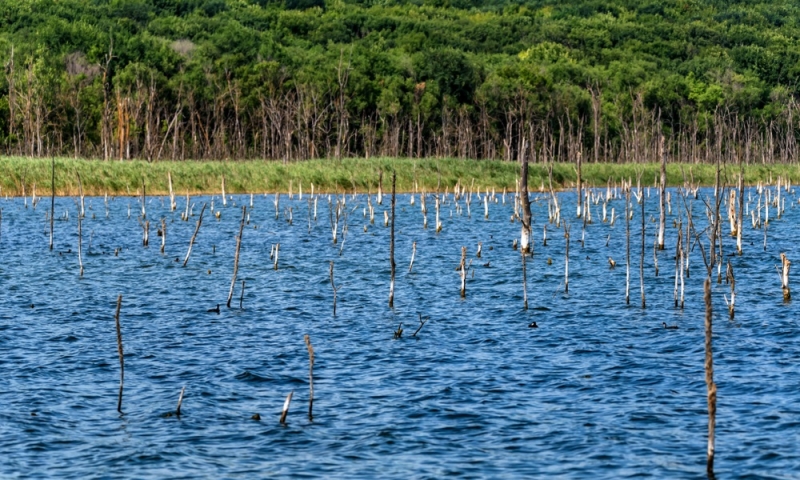
The picturesque lake is located just half an hour from Pyatigorsk. It’s convenient to get there by public transport: minibus No. 19 will take you to the “Tambukan” stop, from which you only have to walk a few minutes.
The lake is famous for its mud, which in composition and quality is compared to the mud of the Dead Sea. It contains many vitamins and has antiseptic, anti-inflammatory and regenerating effects. In many local sanatoriums, Tambukan mud is used to treat skin diseases, and it is also used to treat joints and even inflammation of internal organs.
In the heat, you can swim and sunbathe in the lake, as well as take mud baths. It is shallow here, maximum 2 meters, so the water warms up quickly. If you don’t really want to smear yourself with mud on the shore, but want to test the healing properties of the hunt, in many stores in Pyatigorsk you can buy cosmetics based on Tambukan mud.
Mount Beshtau
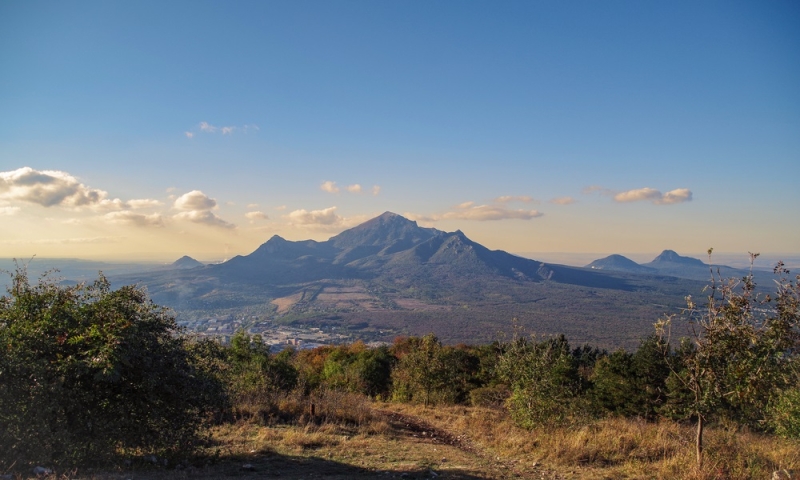
This main mountain of Pyatigorye, as the name implies, consists of five peaks. A walking route to one of them is the most popular type of active recreation among tourists coming to Pyatigorsk and other Kavminvod resorts.
Along the way, you will see subalpine meadows and picturesque slopes, take a million beautiful photos of the surrounding area and visit several attractions. First of all, we will introduce you to the Deuteronomy Assumption Monastery. It is operational, located a little away from the easiest trail, but an asphalt road leads to the gate. The monastery is open to the public from Tuesday to Sunday from 06:00 to 18:00. There is a bakery and an apiary on site, and you can drink tea in a small outdoor refectory. One of the interesting features is an unusual belfry: the bells hang directly on the branch of an old chestnut tree.
Another beautiful place on the mountain is Monastic Lake. It is quite small; in summer water lilies bloom on the surface. You can swim in the lake, but entering the water is inconvenient, and tourists often have picnics on the shore.
Don’t miss the Temple of the Sun. Some believe that in ancient times there was a Scythian temple on this site, others say that these are not ruins, but simply a natural accumulation of stones. Take a look here to form your own opinion.
Restaurants and cafes

Despite the fact that Pyatigorsk was founded as a Russian city, Caucasian cuisine is very popular here. The menus of cafes and restaurants have a lot of meat, which is often cooked over an open fire, and they also respect a variety of aromatic sauces made from local herbs and vegetables – tkemali, adjika, chakhokhbili. Soups are not very common here; the menu mainly contains native Russian rich and thick stews, with local specialties including kharcho, piti and bozbash.
And local residents also advise you to definitely try the ice cream that is made at the Pyatigorsk cold storage plant. They make classic Soviet varieties here – that real ice cream and popsicle.
As for popular restaurants and cafes in Pyatigorsk, we recommend visiting the following:
Family cafe “U Pechorin”(Kirova Avenue, 25B) – dishes of Caucasian and European cuisines are served here. Pancakes and omelettes are prepared for breakfast, and for lunch you can take pasta, shish kebab or lula kebab.
Gukasov’s Coffee House (Kirova Avenue, 23) is a nice establishment located in a beautiful building right at the entrance to the Tsvetnik park. This coffee shop was built at the beginning of the 20th century by pastry chef Arshak Gukasov and is an iconic place. Of course, the modern establishment has a different owner, but it’s very atmospheric inside. For coffee, take fresh pastries, such as a vanilla bun.
Restaurant “Kilikia” (Kirova Avenue, 43D) – a good place for dinner: a beautiful interior, the menu includes Caucasian cuisine and good wine. Guests recommend trying khinkali and shish kebab here.
IL Casaro Restaurant(Begovaya St., 86) – for those who miss good Italian cuisine. This establishment is considered one of the best in the city. They say that everything is delicious here – from salads to pasta, and you definitely won’t find tastier pizza in Pyatigorsk.
What to bring
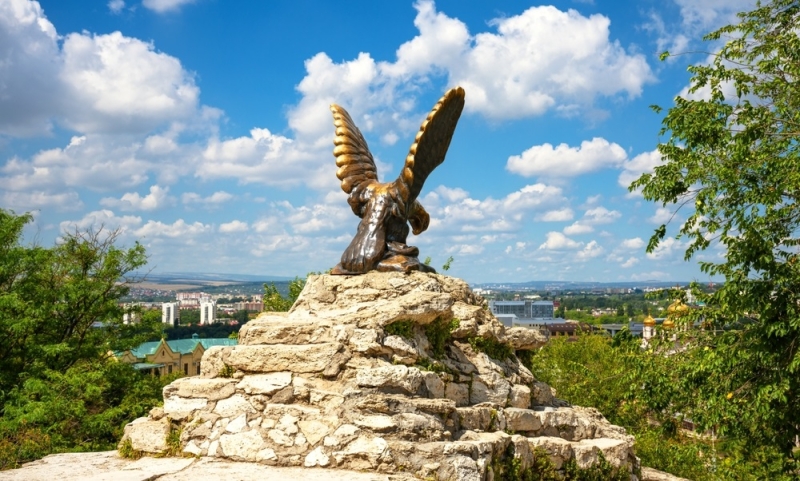
The main symbol of the Caucasian Mineral Waters resorts is special narzan mugs. These are ceramic vessels with characteristic spouts from which you should drink mineral water. This design was not invented for beauty: the fact is that the local water, rich in minerals, is not very favorable for tooth enamel. A bell mug can be purchased at any souvenir shop.
In addition to the mug, we recommend bringing a bottle of medicinal water from local sources. The mineral water called “Pyatigorsk Resort” is sold not only at wells, but also in ordinary city stores and is quite inexpensive. If you want a more original design, look for small glass gift bottles in souvenir shops. If you wish, you can take water directly from the source into your container, but such a souvenir should be stored in the refrigerator, and it may be difficult to bring it home.
Look for original local ceramics in the stores of the Temp enterprise: it produces vases, piggy banks, plates, mugs and other utensils. Craftsmen hand-paint the products with beautiful original patterns.
If you prefer to bring figurines as gifts, pay attention to the images of another local symbol – the mountain eagle. Most often there are compositions in which an eagle flies to a snake (it represents illness, and a proud bird represents victory over all illnesses). In addition to figurines, eagle images can be found on T-shirts, keychains and magnets.
You can also bring home delicious souvenirs, for example, baklava or churchkhela, which is made from local berries and fruits. Sweets are sold in gift sets at any souvenir shop – or go to the market to choose them by weight. You can also buy a jar of local jam: in the Caucasus it is made from mulberries, dogwoods, white cherries, barberries, walnuts and even pine cones.
In the markets you can also find different types of fruit teas, such as apple, strawberry or cinnamon pear. Various local fruits and berries are added to Krasnodar leaf tea, the result is very tasty and aromatic.
Conclusion
In order to leave only good impressions from visiting Pyatigorsk and neighboring resort towns, you need to carefully prepare for the trip – and we hope that our guide will become an excellent assistant for you. We have listed the best attractions in Pyatigorsk and the surrounding area, found good hotels and restaurants with high ratings, so all you have to do is pack your bags and buy tickets. As usual, look for the best prices on OneTwoTrip.

